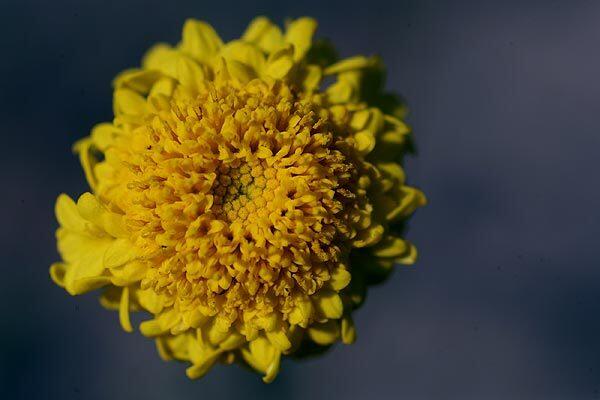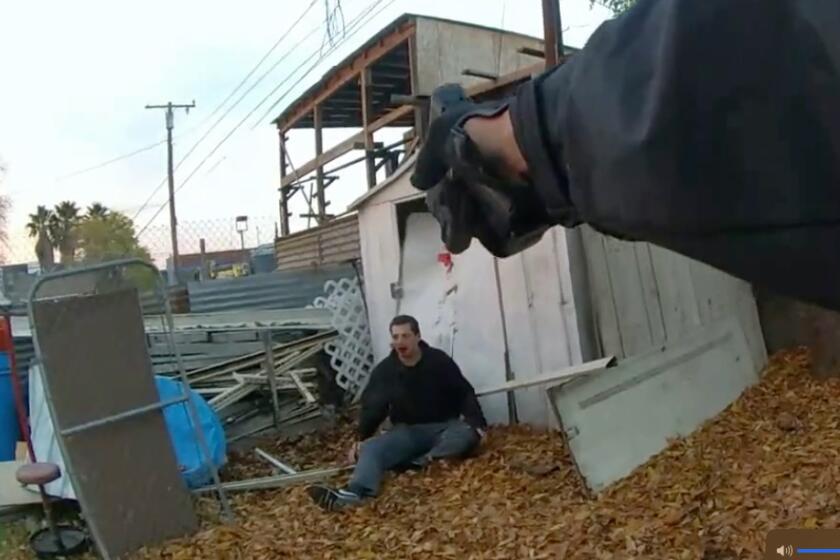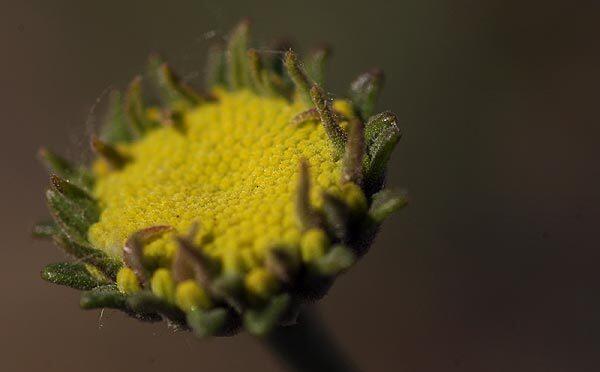
Orcutt’s yellow pincushion was discovered and scientifically described by British naturalist David Douglas in 1831, somewhere between San Francisco and Santa Barbara. Today, remnant populations are believed to be clinging to existence in San Diego and Ventura counties, Rosarito Beach in Baja California, Mexico, and the Ballona Wetlands lagoon sandwiched between Playa del Rey, Marina del Rey, Westchester and Culver City. (Francine Orr / Los Angeles Times)
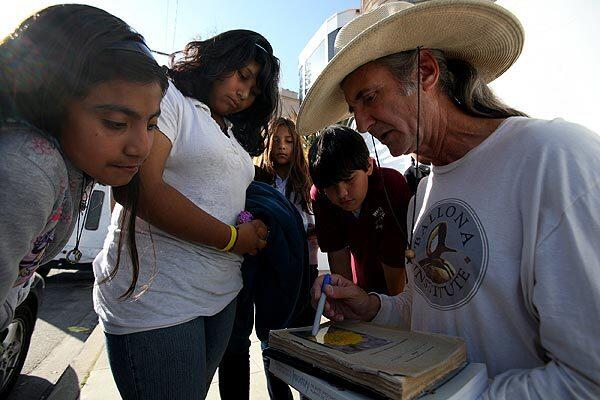
Robert Jan “Roy” van de Hoek, right, director of the Ballona Institute, shows a photo of Orcutt’s yellow pincushions to students from the Westside Leadership Magnet School. (Francine Orr / Los Angeles Times)
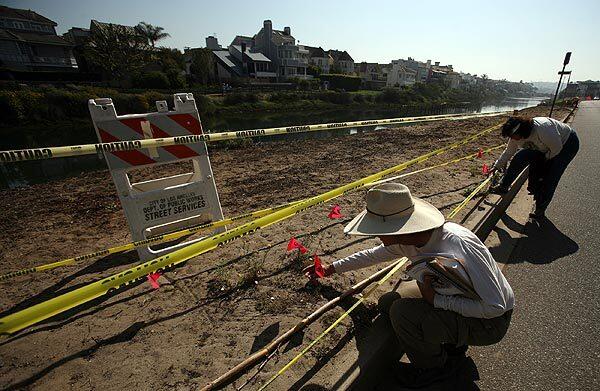
The flowers have sprouted in the center of the $400,000, four-acre “recreation and wildlife enhancement” project that includes native-plant landscaping, irrigation systems, fencing and a walkway made of decomposed granite. “If we have a court order to do so, we will stop the project,” city project engineer Richard Liu said. “The project is about half completed.” (Francine Orr / Los Angeles Times)
Advertisement
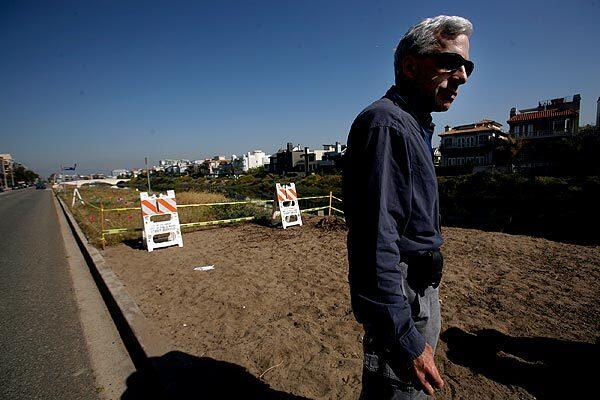
City biologist William Jones acknowledged that some pincushions will be wiped out by construction. But he also plans to collect seeds from existing plants and grow them elsewhere. (Francine Orr / Los Angeles Times)
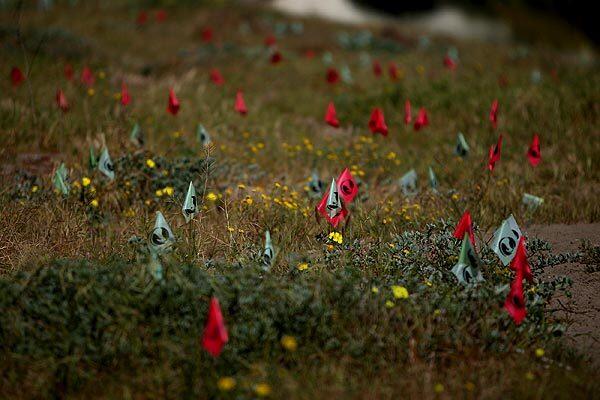
The city of Los Angeles has placed thousands of flags marking flowers. (Francine Orr / Los Angeles Times)
